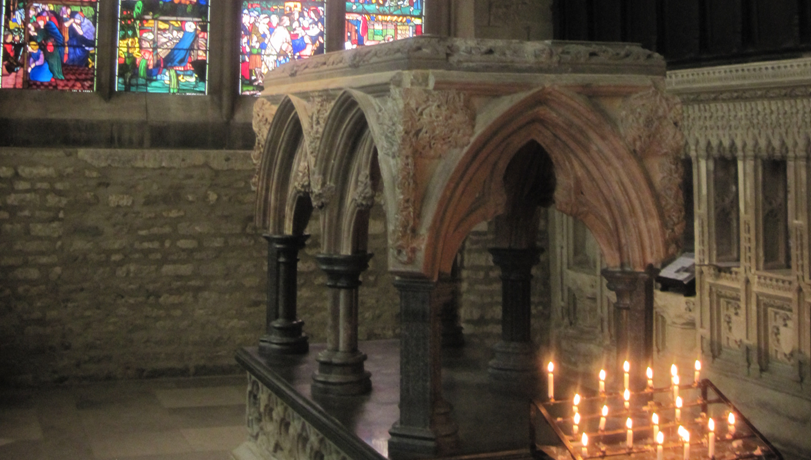Speaking of monastic saints...
St. Drostan was a disciple of St. Columba on his missions through the Kingdom of the Picts in the 6th century. He established a monastery at Deer, which is now called by the related name Aberdour (or Inchcolm), which became the most important Church in that part of Scotland where it secured Christianity. Of this monastery, which fell into decay in periods but held religious communities until the Reformation in the 1500s, Drostan was abbot and perhaps also bishop, as many Celtic abbots were, and probably received a lot of royal support for it because of its proximity to the Pictish capital of Craig Phadrig, near Inverness. Towards the end of his life he left his abbey in the hands of the next abbot and became a hermit in the Scottish Highlands where he continued to preach to and give relief to the poor.
Anyhow, Drostan's abbey at Deer was instrumental in establishing churches and securing Christianity in the Moray-Grampians area. Thus, Drostan's Abbey, which was the mother of so many Christian churches in Eastern Scotland, was itself a daughter of Iona, the mother-house of all Scottish Churches (except for Whithorn), and of Iona it could be said, since it was established by St. Columba, was daughter to Clonard Abbey in Ireland and so forth. The seeds of missionary monasticism grew quickly and spread Gospel in the British Isles quickly once they were planted. It is the same today. With modern St. Finnians (teacher to Columba), we can have more St. Columbas. And with more St. Columbas we can have many more St. Drostans: many more churches and cathedrals filled: many more people comforted by the presence of Christ.
Above: St. John the Evangelist and the first chapter of his Gospel "In Principia erat Verbum" from the Book of Deer, a Celtic gospel book illuminated at St. Drostan's monastery.



No comments:
Post a Comment